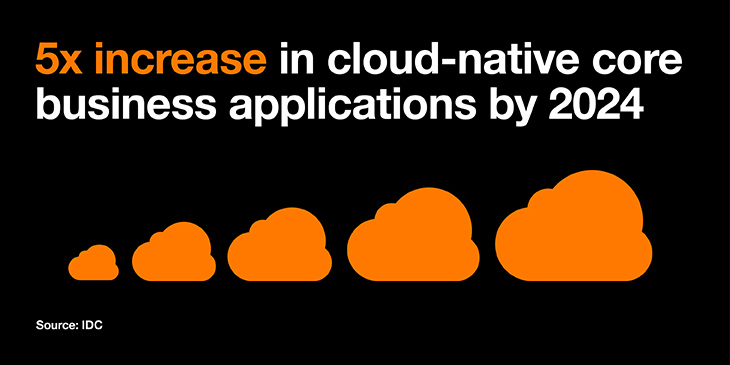According to Gartner, boards have given CIOs an unequivocal mandate to utilize technology to speed growth. Sixty-nine percent of boards have responded to the global health crisis with digital business acceleration, while 60% have chosen improving operational excellence through digital business.
However, these digital challenges also provide significant opportunities for CIOs to make their mark in the transformation of the enterprise – better aligning IT with the business. Cloud is a key enabler here, providing building blocks, agility, resilience and a foundation for new business models, pushing products to market faster with new delivery models. In these unpredictable times, it can also make current IT investments last longer. Re-investing in your application portfolio by enhancing it with cloud-native features, for example, can give longevity to existing services.
Getting cloud right
According to IDC, enterprises will increasingly implement scalable and flexible architectures built on cloud-centric technologies in the future of digital infrastructure. By 2024, the analyst firm predicts that 75% of enterprises will prioritize infrastructure agility and operational efficiency, leading to a fivefold increase in the adoption of cloud-native architectures for core business applications.
An agile, business-outcomes-oriented and well-thought-out cloud roadmap has never been more critical as the cloud establishes itself as the foundation of digital transformation. Furthermore, as enterprises increase their investments in the cloud, the business impact of a cloud strategy is critical to growing a business’s competitive edge and bottom line.
Cloud, it must be remembered, is not a specific technology platform or a destination. Neither is it a tick-box exercise. Instead, the cloud demands commitment and continuous monitoring and tweaking to deliver on its promise of flexibility, scalability, and increased productivity through agile and codification practices.

A CIO’s priority list
Today, CIOs have three key topics at the head of their agendas: innovation, resilience in dealing with disruption, and digital transformation. Each comes with its own unique set of challenges.
One focus of the CIO across all these is linking business agility and business outcomes. Other vital considerations throw a ring around new skills, different ways of collaboration and transparent communication. Innovation, resilience and transformation all require cultural change. Effectively managing the seismic changes that cloud services bring is crucial to their successful adoption across the organization and to drive new business outcomes.
Many enterprises surprisingly don’t consider the new skills involved in moving to the cloud or for performing greenfield, cloud-native development. Given the current skills drought, a CIO would be foolish not to run a skills-gap assessment. One way to bridge the skills gap is to work with a trusted and experienced cloud managed service provider (MSP).
MSPs can also help CIOs stay on top of new technologies and value creation. For example, the industry moves rapidly towards the intelligent cloud with emerging applications incorporating artificial intelligence (AI) and machine learning (ML) through cross-functional collaboration mindsets.
DevOps and cloud: a winning team
DevOps combines development and operations at its base level to drive collaboration, building, testing and pushing out applications quickly. At its best, it provides continuous software development, quicker resolution of problems and more resilient operating environments and increases end-user satisfaction.
This potent combination, however, doesn’t come without challenges. It requires resources in terms of people and cost analytics. CIOs, for example, need to align budgets with a continuous deployment model or create bottlenecks in terms of innovation and deployment.
Cloud transformation must connect business outcomes
No one size fits all for digital transformation, and the same can be said of the cloud. While lifting and shifting workloads may work for one enterprise, another may require some or all of its applications to be refactored for the cloud. To develop a successful transformation strategy for the cloud, the CIO must work with other stakeholders to understand new opportunities and business objectives and link the dots to provide the right cloud applications, data and operational capabilities to support existing, new and emerging business models.
At the end of the day, cloud is a business enabler. However, operating and managing an environment with reinvented and sped-up value creation using multiple cloud technologies, services, integrations and new data is not easy. CIOs must address these issues if their organization is to flourish and grow in the digital economy.
To find out how CIOs can put together a future-proof cloud transformation strategy that embraces innovation, resilience and transformation, download our ebook: A cloud strategy for the future.

As a Chief Evangelist, Jan Aril focuses on sharing transparent and inspiring knowledge about his areas of expertise, such as public cloud, big data and AI, with the aim of helping companies take on a more sustainable innovation journey. He has more than two decades of experience in the IT-industry and has held positions from full stack development and sysadmin to C-level and board member. He works across the brands of Basefarm and Orange Business.